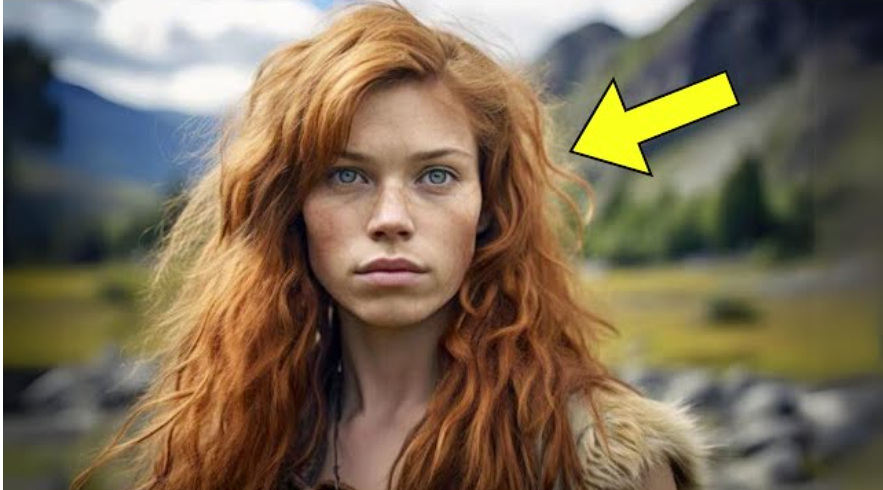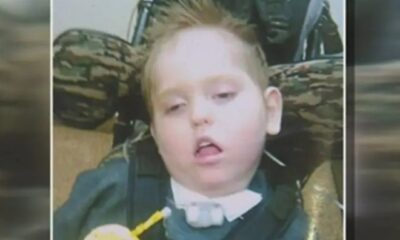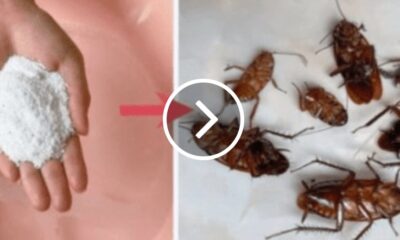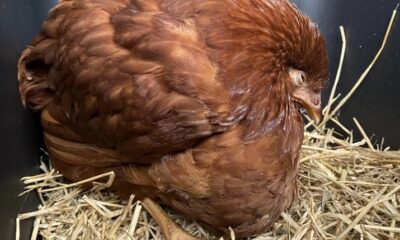Modern humans evolved from Homo sapiens, and a small percentage of us have Neanderthal DNA. But did you know that there were more species of ancient humans? A newly discovered girl had parents from two different species—one Neanderthal and another one that was recently discovered. This discovery will change our perception of human evolution.
Thanks to modern DNA tests, people can see whether they are part Neanderthal. Neanderthals are an extinct subspecies of humans that went extinct 40,000 years ago. Today, only 2% of Eurasians have Neanderthal DNA, but there are more species of humans that existed thousands of years ago. A few recent discoveries have found a third species of ancient humans that might have contributed to our ancestry. But how is that possible, and what happened to them…Click Here To Continue Reading>> …Click Here To Continue Reading>>
A professor reveals a 3D model of the head of an ancient human—the Denisovan. In southern Siberia, Russia, there is a cave near the Altai Mountains called the Denisova Cave. It was named after an 18th-century hermit who lived there. In 2008, archaeologists from the Russian Academy of Sciences unearthed several bone fragments there. Scientists dated the oldest bones to at least 51,000 years ago, but it was not a Neanderthal or Homo sapien. Researchers from the Max Planck Institute announced that it was a new species of human—the Denisovan.
Beyond their DNA sequencing, little is known about the Denisovans. We know that they lived as far back as 217,000 years ago, but few Denisovan bone fragments have been found. Only five viable specimens have been analyzed to date. But scientists had no idea that a new discovery would come out only a few years later. This ancient human was not just Denisovan—she was an interbred between two different human species, which challenges what we previously knew about human evolution.
Interbreeding can be confusing. For instance, why do Neanderthals and Homo sapiens successfully interbreed, but mules (a cross between a horse and a donkey) become infertile? The answer lies in DNA. A horse has 64 chromosomes, and a donkey has 62. When a mule is born, it gets 63 chromosomes—an odd number, which results in a defective genetic code. DNA needs to latch onto an even amount of chromosomes—50% of the father’s and 50% of the mother’s. Although mules are infertile, plenty of other species can create fertile offspring. For instance, a liger, a mix between a tiger and a lion, is fertile. These species are genetically compatible, just as many primates are also compatible. Knowing this, it makes sense why Neanderthals and Homo sapiens could successfully interbreed.
Researchers predicted that Denisovans also interbred with other human species, whether their offspring became fertile or not. However, they never found proof of this hypothesis until 2018.
Coming up: What a university student found that changed science forever.
In 2012, Russian archaeologists were once again examining the Denisova Cave. They uncovered multiple bone fragments but could not identify most of them. The archaeologists gathered a collection of 2,000 bone fragments and sent them to a lab. These bone fragments sat untouched and unresearched for several years. Then, in 2016, a student at the University of Oxford discovered that one of these bone fragments was unlike anything scientists had ever seen before.
Samantha Brown, an MSc student at the University of Oxford, was analyzing the 2,000 bone fragments in 2016. She was testing the DNA to determine what type of animal each bone belonged to. But to her surprise, at least one bone, only 2 cm long, ended up being human. Knowing that Denisova Cave has a history of housing human remains, Brown looked closer. What she found was so shocking that she initially believed she had made a mistake. Brown discovered that this human fragment was a unique result of interbreeding. The person was part Neanderthal and part Denisovan. If her results were accurate, then this would be the first evidence of first-generation breeding between two human species.
Brown contacted the head of the department, and then the bone fragments were sent to the Max Planck Institute for Evolutionary Anthropology in Leipzig, Germany. This institute had the technology to closely examine the bone fragment and confirm Brown’s results.
Svante Pääbo, the director of the Department of Genetics at the Max Planck Institute, talks about archaeology. Brown was not the only person who was surprised. A team of paleogeneticists, Viviane Slon and Svante Pääbo, conducted a genome analysis of the bones. They isolated each DNA sequence to identify which parent was connected to each species. To their shock, both researchers confirmed that Brown was right—this bone was indeed the first ever Denisovan-Neanderthal hybrid discovered.
“My first reaction was disbelief,” Slon later admitted. The chances of finding a first-generation inbred human are especially low. Scientists predicted that Denisovans mated with other ancient humans, but they never expected to find proof this quickly. “We knew from previous studies that Neanderthals and Denisovans must have occasionally had children together,” Slon explained. “But I never thought we would be so lucky as to find an actual offspring of the two groups.” However, this DNA test was only the tip of the iceberg. Who was this ancient human, and how did these two species end up mating in the first place?
A reproduction of a Neanderthal woman is in the National Archaeological Museum in Madrid, Spain. When Slon and Pääbo further examined the bone fragment, they learned more about this ancient human. They knew that this person was a girl, and based on the width of her bones, they estimated that she was around 13 years old. According to radiocarbon dating, this girl likely died 90,000 years ago. The initial bone that Brown examined was the tip of her finger. The researchers named her Denny after the cave where she was found.
Coming up: Why a first-generation hybrid human was such a surprising find.
Two ancient humans are represented in this museum display. To uncover Denny’s parentage, the researchers were able to separate DNA sequences. They determined that the mitochondrial DNA came from a Neanderthal. Mitochondrial DNA comes from the mother, meaning that her mother was a Neanderthal and her father was a Denisovan. “An interesting aspect of this genome is that it allows us to learn things about two populations—the Neanderthals from the mother’s side and the Denisovans from the father’s side,” explained geneticist Fabrizio Mafessoni.
The next question was how they came together. Despite all these findings, the research team still needed several people to confirm them. “I thought they must have screwed up something,” Pääbo recalled. For a third analysis, they sent the bones to the Francis Crick Institute in London. Population geneticist Pontus Skoglund concluded that these findings were correct. “They nail it,” he said. “There seems to be no uncertainty at all.”
But why were the scientists so uncertain about these findings? Was it really that shocking? A model of a Neanderthal woman from the Sima de los Huesos cave is in a museum. This ancient human was a result of first-generation interbreeding, meaning that their parents were fully Neanderthal and fully Denisovan. This is an incredibly rare find—even a first-generation Neanderthal-Homo sapien bone fragment has yet to be discovered. Skoglund later explained, “To find a first-generation person of mixed ancestry from these groups is absolutely extraordinary. It’s really great science coupled with a little bit of luck. I think it’s going to go into the textbooks right away.”
How did her parents meet? Stay tuned to read some theories.
This model shows the face of an ancient human woman. Although Denny’s parentage is clear-cut, the rest of her life is an enigma. Since her known remains consist of an unidentifiable bone fragment, it is very difficult to say anything about her daily life, activities, health, or subsistence, says Katerina Harvati-Papatheodorou at the University of Tübingen in Germany. On top of this, Denny’s paternal family history is largely unknown. Because Denisovans were a recent discovery, scientists have much to learn about this species’ history and how they connect to modern humans.
Although interbreeding is possible, it will not happen if the species live far apart from each other. For example, ligers don’t naturally occur in the wild because lions and tigers do not live close to one another. Denny poses the same problem. Harvati believes that these groups traveled far before mating. “Neanderthals didn’t just stay in one place for thousands of years,” he explained. If this is true, then Denny’s genome is truly unique compared to others during that time. READ FULL STORY HERE>>>CLICK HERE TO CONTINUE READING>>>
Another possibility is that Denny was one of many who lived in a Neanderthal-Denisovan colony. That would explain why archaeologists have found so few Denisovan bones. “The number of pure Denisovan bones that have been found I can count on one hand,” Harvati says. If this is true, then there were few pure-blood Denisovans around. Their genes might have mixed into the Neanderthal bloodline and might have eventually disappeared. But then again, this is just a theory.
Denny is not a pure hybrid. Although her DNA is mostly Denisovan and Neanderthal, she has some other hominin genes too. According to the tests, Denny has high heterozygosity. Heterozygosity is the amount of genetic variation in
a person. For instance, if two cousins had a kid, that kid would have low heterozygosity. But if two people from different countries and ethnicities had a kid, they would have high heterozygosity. So why was Denny the latter?
Up next: How Denny challenges the current theories on human evolution.
During an interview with National Geographic, computational biologist Richard E. Green claimed that Denny is “heterozygous out the wazoo.” In other words, Denny’s parents were people from two very different areas who rarely ever mated. According to her DNA sequence, Denny is more closely related to a 55,000-year-old Neanderthal in Croatia than she is to the 33,000-year-old Neanderthals near the Denisova Cave. So how did her parents meet?
One possibility is that Denny’s parents met in the cave. Most Neanderthals lived in Eurasia while Denisovans were around Siberia. The Altai Mountains, where the cave discoveries were found, lie between these two territories. “I think any Neanderthal that lived west of the Urals would never ever meet a Denisovan in their life,” Pääbo theorizes. Since the two species lived close to each other, if this is true, is it possible that modern humans have Denisovan blood?
The discovery of Denny suggests that interbreeding might have been more common than researchers previously thought. Until 2018, scientists had only studied 23 ancient human specimens. Of those, only two were the results of interbreeding, which led experts to believe that it was rare. But perhaps they were wrong. “Neanderthals and Denisovans may not have had many opportunities to meet, but when they did, they must have mated frequently, much more so than we previously thought,” Pääbo told the Evening Standard.
To see one theory for how the Denisovans went extinct, continue reading.
Denny inspired researchers to reexamine other human specimens. One example is Oase 1, an ancient human’s lower jaw that dates back 42,000 years. Although Oase seemed to be a full-blood Homo sapien, closer analysis showed that Oase had a small amount of Neanderthal DNA. How is this possible? Oase’s Neanderthal ancestor likely dated back four to six generations. “If interbreeding were truly rare,” Pääbo said, “then these discoveries would be few and far in between.” But both Oase and Denny are evidence to the contrary.
In this 1885 painting, ancient humans run from a mammoth. According to paleoanthropologist Chris Stringer, Neanderthal-Denisovan pairings had evolutionary advantages. Humans who had genetic diversity tended to survive better. Plus, both humans and animals thrive in numbers. “Human groups were very small and vulnerable to drastic mortality,” explains Harvati-Papatheodorou. As long as mates stuck together, their children would have a higher chance of survival. Because ancient human groups migrated often, they inevitably ended up around other species. Perhaps this is how Denny came to be.
A metal model shows the steps in human evolution. Interbreeding provides an interesting theory for how the Denisovans went extinct. Neanderthals and Denisovans may not have become violently extinct, Pääbo suggests, but may have become absorbed into modern human populations. Every time a Denisovan mated with another species, their genetic percentage decreased over time. This species might have dwindled due to interbreeding. If this is true, then modern humans developed in part due to the Denisovans. As with many other ideas, this has not been proven yet.
If the Denisovans and Neanderthals mated frequently, why did they remain apart for hundreds of thousands of years? Harvati has one explanation. She suggested that Denisovan-Neanderthal offspring might have been infertile. This would explain how the Denisovans went extinct and why Neanderthal-Homo sapien offspring survived. Unfortunately, there is no way to know whether Denny was infertile. And if she was fertile, how did Denisovan DNA die out?
Denny presents more questions than answers, but we are getting closer to the truth about human evolution. In this 1975 Doug McClure film, The Land That Time Forgot, two cavemen fight. Although it is possible that the Denisovans assimilated into other human species, Joshua Akey of Princeton University proposed a different idea. “Denny’s discovery does not rule out a more complicated mixture of factors, including competition,” he said.
In 2020, European scientists confirmed that competition, whether it be over food or mates, can make a species go extinct. If that species loses the competition, then they will struggle to survive. Did the Homo sapiens or Neanderthals beat the Denisovans in competition?
A diagram shows several species of ancient humans. So what does this mean about modern humans? Initially, scientists believed that Homo sapiens came from a mysterious hominin species and mixed with Neanderthals. But Denny suggests that the creation of modern humans was much more complicated. According to the research report in Evolutionary Biology, “Recent genomic research has shown that hybridization between substantially diverged lineages is the rule, not the exception, in human evolution.” In other words, modern humans are the results of several different species interbreeding.
Keep watching to learn about a fourth species of human that was recently discovered. Museum visitors look at a model that represents a Neanderthal man. Reports about Denny’s DNA came out in 2018. Then, in January 2019, another discovery was made. Researchers reported that several species of humans inhabited the Denisova Cave in Siberia over thousands of years. It is unknown when different species were there at the same time. Researchers also cannot tell if Neanderthals or Denisovans lived there or simply visited. However, further excavation might reveal more ancient humans that will unlock the mystery of our ancestors. Only time will tell.
A prehistoric man was constructed based off of bones found in 1920. In February 2019, another discovery challenged our notions of human evolution. Scientists from the Center for Genomic Regulation applied artificial intelligence to the human genome, which identified a fourth human ancestor. The problem? We don’t know who that is. This unidentified human ancestor might have contributed to our modern DNA, along with the Neanderthals and Denisovans. But even though Denny has given us many discoveries, we still have a lot of unanswered questions about how human beings came to be.
Denny’s discovery eventually leads to the question: Are modern humans descendants of the Denisovans? Scientists still don’t know. A Homo sapien-Denisovan hybrid has yet to be found, and even if it were, this still would not confirm whether or not these hybrids were fertile. It is possible that future studies will find bits of Denisovan DNA in modern humans. There could be many people living today with Denisovan blood in their veins, but we may never know for sure.


 HEALTH & LIFESTYLE1 year ago
HEALTH & LIFESTYLE1 year ago
 METRO10 months ago
METRO10 months ago
 SPORTS11 months ago
SPORTS11 months ago
 IN-THE-NEWS11 months ago
IN-THE-NEWS11 months ago
 HEALTH & LIFESTYLE4 months ago
HEALTH & LIFESTYLE4 months ago
 IN-THE-NEWS12 months ago
IN-THE-NEWS12 months ago
 SPORTS11 months ago
SPORTS11 months ago


